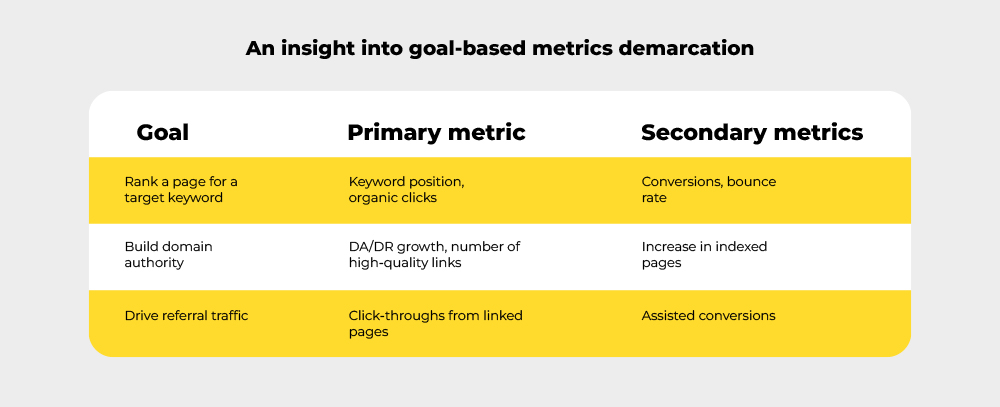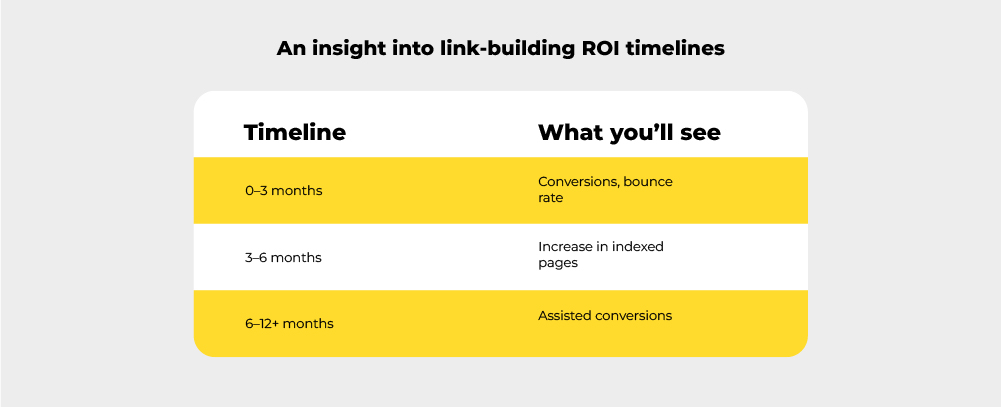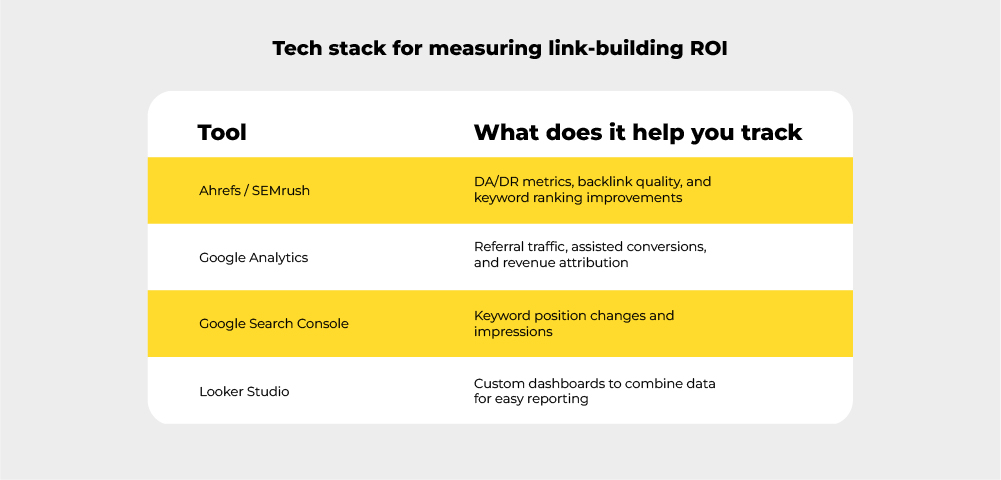So, it’s a sprightly September morning, and everyone is walking with a spring in their step (you know the Holiday season is just around the corner!)
As you twirl that Stanley of lukewarm coffee in your hand, and mull over last week’s campaign report in the other, your boss (or client) leans in with that dreaded question:
“So… how much revenue did those shiny backlinks bring in?”

Source (Yeah! We get it, fellas!)
Cue the awkward pause. Because sure, you’ve nailed the outreach, secured killer DR 70+ links, and even watched rankings nudge up a bit…
But how do you prove that all this link building is more than just a fancy game of digital popularity? Here’s the truth: link building ROI is measurable.
Yes, even in the messy, multi-touch, algorithm-juggling world of SEO in 2025. And today, we’re going to break it down, step by step, so you can stop guessing and start showing cold, hard results.
Whether you’re an SEO lead, a digital marketer, or an agency pro trying to justify that monthly invoice, this SME guide, backed by our 13+ years of SEO expertise, is for you.
Why measuring link building ROI feels so tricky
Before we discuss numbers, let’s address the elephant in the room: why is the ROI of link building so difficult to determine?
Unlike paid ads, the returns from link building aren’t always immediate. Links don’t just bring referral traffic; they compound your site’s authority over time, helping your pages climb the SERPs and bringing organic traffic long after the campaign is over.
And therein lies the challenge: how do you quantify “authority” in dollar terms?
You may think of link building like planting a tree. You water it, nurture it, and for a while, it just sits there. Then one day, it’s giving you shade, fruit, and maybe even a home for some squirrels. Measuring ROI means tracking both the early indicators and the long-term impact of your efforts.
Step 1: Embark with clear goals (Align with your North Star!)
Honestly, if you don’t know where you’re going, every metric will look meaningless.
You have got to ask yourself the following questions:
~ Are you building links to rank a specific page?
~ Are you aiming to increase domain authority to boost overall visibility?
~ Or maybe your goal is to generate referral traffic from high-authority websites?
Now, each goal demands a different approach to measure ROI. For instance:

Being crystal clear upfront ensures you’re not chasing vanity numbers that look good but don’t move the revenue needle. On that note, you might want to explore ~ DA vs. DR: Which Metric Should Guide Your Link Building Strategy?
Step 2: Know your link-building metrics and KPIs
Not all links are created equal. To measure link-building ROI effectively, focus on metrics that directly impact performance.
Here are the big ones:
1. Quality of links (DA metric for link building)
High Domain Authority (DA) or Domain Rating (DR) links aren’t everything, but they’re a strong indicator of credibility. A single backlink from a DR 80 site in your niche often outperforms ten backlinks from DR 30 sites.
2. Number of inbound links
Track the volume, but don’t obsess over it. Fifty spammy links won’t move the needle; a handful of well-placed inbound links on relevant pages will.
3. Anchor text relevance
Relevant anchor text improves context and ranking signals. You may think of it as Google’s way of understanding what your page is about.
4. Referral traffic
Measure inbound links not just for their SEO juice but also for the actual visitors they bring to your site. UTM tagging makes this easy.
5. Rankings and organic traffic
Monitor the keyword rankings and organic sessions of target pages linked during the campaign. These are your leading indicators of future ROI.
6. Assisted conversions
Many link-building efforts drive top-of-funnel awareness. Track assisted conversions in Google Analytics to connect links to revenue indirectly.
Step 3: Tie ROI to real business outcomes
Here’s where the magic happens, turning metrics into money.
The simplest formula for link-building ROI is:
ROI (%) = [(Revenue Attributed to Link Building – Cost of Link Building) ÷ Cost of Link Building] × 100
But wondering what counts as revenue “attributed to link building”? Let’s break it down:
- Direct conversions: Leads or sales from referral traffic.
- Organic growth: Increased revenue from pages that climbed rankings due to new authority.
- Brand lift: Harder to measure, but links on authority sites often improve brand credibility and CTR.
For example, imagine you spent $3,000 on a link-building campaign targeting a high-value service page. Three months later, that page ranks in the top 3 for its keyword, driving an extra $10,000 in monthly revenue. Your ROI? A cool 233%.
Step 4: Account for the time lag
Here’s the truth nobody loves to hear: link building isn’t instant gratification.
It can take 3–6 months for a link to fully impact rankings and traffic. When calculating ROI, set realistic timeframes. Quarterly reporting often strikes the right balance; it’s long enough to show movement but short enough to keep stakeholders engaged.

On that note, patience isn’t just a virtue; it’s quite a good strategy here.
Step 5: Leverage the right tools for accurate measurement
You don’t need a fancy tech stack to measure link-building ROI, but the right tools will make your life a lot easier.

On that note, this read might interest you ~ The Airtable & Instantly Advantage: How Mavlers Elevated Their Link-Building Game.
We got a pro tip for you! Build a link-building performance dashboard that blends traffic, revenue, and authority metrics. Stakeholders love a visual story.
Cost of link building vs ROI: Setting the right expectations
One of the toughest conversations agencies and in-house SEOs face is explaining the cost of link building vs ROI.
High-quality links aren’t cheap. Outreach, content creation, and placement fees add up. But when you compare that cost to the lifetime value of organic rankings, link building often delivers one of the highest ROIs in digital marketing.
Think about it:
- A single top-ranking page can drive thousands of visitors every month for years.
- Unlike paid ads, you’re not paying for every click.
Frame it like an investment in compounding growth, not a one-off expense.
Telling the story behind the numbers: Reporting ROI like a pro
Here’s the thing: numbers alone don’t convince stakeholders. What sells the value of link building is the story you build around those numbers.
Instead of a sterile report that says:
- 10 new links acquired
- DR increased by 5
- Rankings improved
Try telling a narrative like:
“By securing 10 high-authority links, we increased our domain rating by 5 points, helping our service page break into the top 3 search results. This shift drove an additional 5,000 organic visitors in August alone, translating to $12,000 in revenue. In short, every dollar invested in this campaign returned $4 in value within three months, and we expect that to keep growing.”
That’s how you make the ROI of link building resonate.
Common pitfalls to avoid when measuring ROI
Even seasoned SEOs trip up here. Watch out for these traps:
- Chasing vanity metrics: A spike in backlinks means nothing if they don’t impact rankings or revenue.
- Ignoring link quality: Ten links from low-quality sites won’t beat one link from a niche-relevant authority.
- Overlooking assisted conversions: Many campaigns influence top-of-funnel awareness that drives revenue later.
- Underestimating timeframes: Don’t declare a campaign a failure after 30 days; give links time to work.
Want to delve deeper? Try reading ~ Top 7 Link Building Mistakes to Steer Clear of in 2025.
Making ROI measurement an ongoing habit
Link building ROI isn’t a one-and-done exercise. The best-performing teams treat measurement as an ongoing process.
- Monthly: Track link acquisitions, traffic, and keyword movement.
- Quarterly: Report on revenue impact and ROI trends.
- Annually: Audit the overall cost of link building vs ROI to refine strategies for the next year.
This cadence keeps stakeholders informed and allows you to adjust tactics before small issues turn into costly mistakes.
The road ahead
Are you considering partnering with Mavlers for your link-building requirements? Then you must read our detailed guide on ~ Mavlers’ Link Building Success: What KPIs You Should Expect?


Karan Arora - Subject Matter Expert (SME)
Karan is an SEO and link-building expert with over 4 years of experience in helping brands grow through strategic, data-driven SEO and impactful link-building campaigns. His core expertise lies in high-quality link acquisition, digital PR, and white-hat outreach strategies that boost authority, visibility, and long-term rankings. He is passionate about driving organic growth and helping brands/clients stay ahead in an ever-evolving digital landscape.
Naina Sandhir - Content Writer
A content writer at Mavlers, Naina pens quirky, inimitable, and damn relatable content after an in-depth and critical dissection of the topic in question. When not hiking across the Himalayas, she can be found buried in a book with spectacles dangling off her nose!
Top 6 artificial intelligence marketing tools to reinforce email marketing
Why every SEO should care about brand mentions in the age of ChatGPT and LLMs